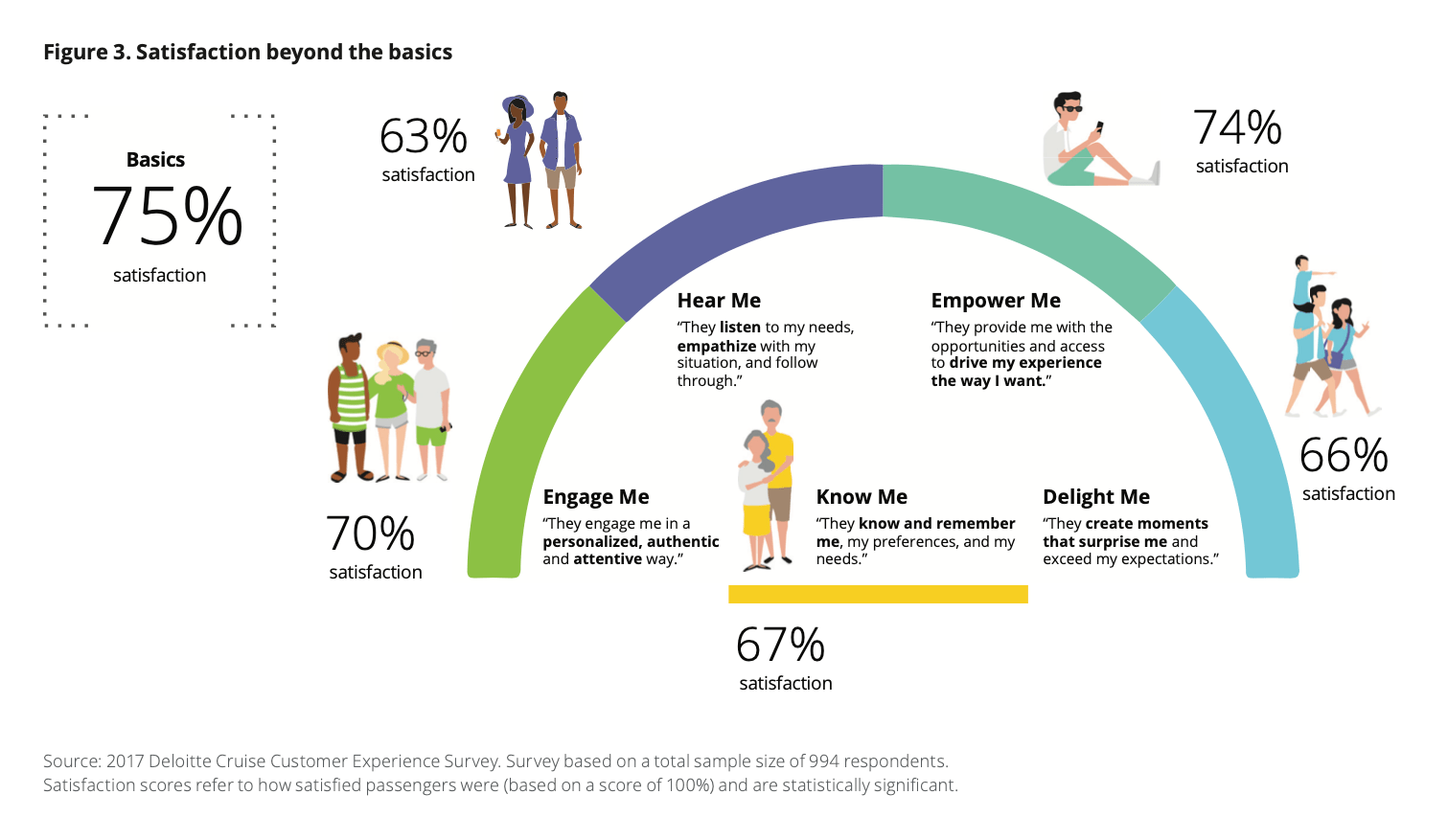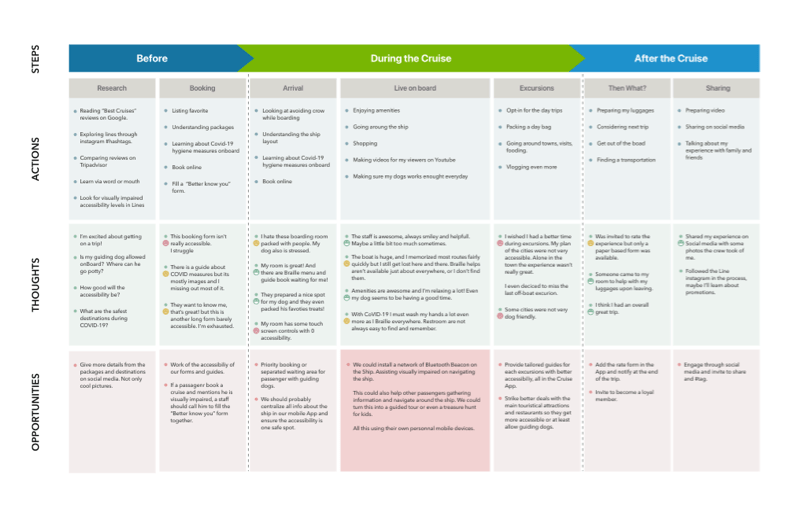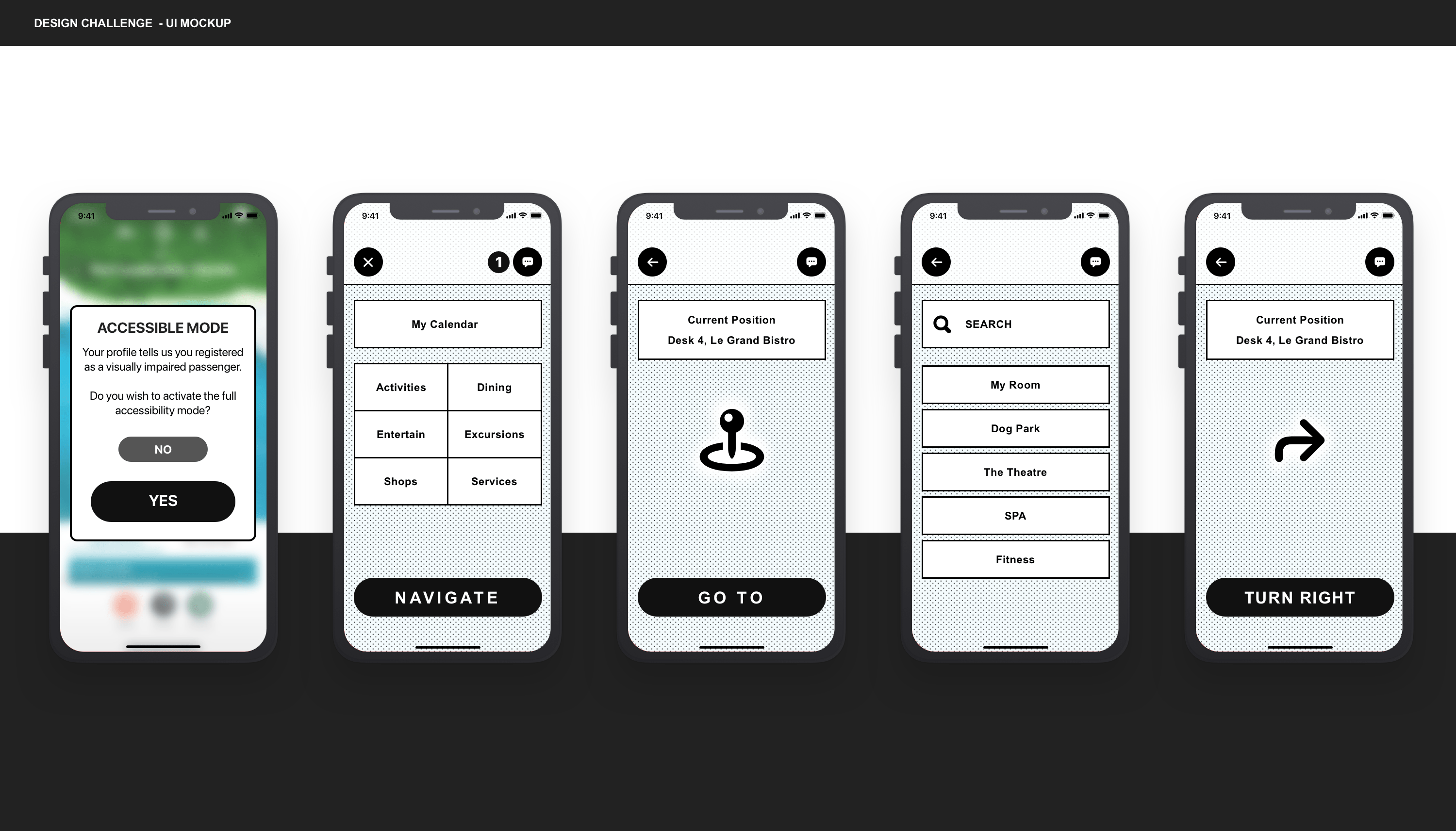
Delight visually impaired passengers by safely empowering them.
THE PROJECT
We're delving into the cruise journey experience with a special emphasis on passengers with visual impairments. Our goal is to enhance their customer experience, while factoring in the constraints presented by the COVID era.
PREREQUISITES
UNDERSTANDING VISUAL IMPAIREMENT
Before proposing enhancements, it's paramount that we deeply comprehend the needs and expectations of visually impaired individuals embarking on a voyage, especially one as expansive as a cruise with over 2,000 passengers.
While we strive to empathize and understand, it's likely that we won't capture every nuance of their experience. As such, in a real-world design challenge of this magnitude, we would enrich our team with one or two visually impaired volunteers. Their insights would be invaluable in validating our assumptions throughout the design process.
DEFINITION
According to the World Health Organization (WHO), visual impairment is defined as vision loss that cannot be corrected with glasses or contact lenses glasses or contact lenses cannot correct vision loss. The WHO further categorizes varying degrees of visual impairment, ranging from mild vision loss all the way to complete blindness.
VALUE PROPOSITION

WHO IS IT FOR?
While millennials currently make up only 15 to 20% of cruise passengers, they are undeniably the future of cruise travel.
This demographic presents a unique opportunity for enhancing passenger satisfaction. They come with a distinctive set of skills and expectations that contrast with previous generations. With their adeptness at mobility and connectivity, the next generation of seniors will have different demands. Cruise lines must be prepared to adapt to this impending shift.
WHAT IS IT?
It's a digitally-advanced Customer Experience (CX) framework, tailored for the next-generation clientele. This framework provides a comprehensive 360° approach, addressing both the unique needs of individuals with disabilities and prioritizing hygiene measures. The aim? To set the gold standard in the cruise industry of tomorrow, ensuring a distinct competitive edge.
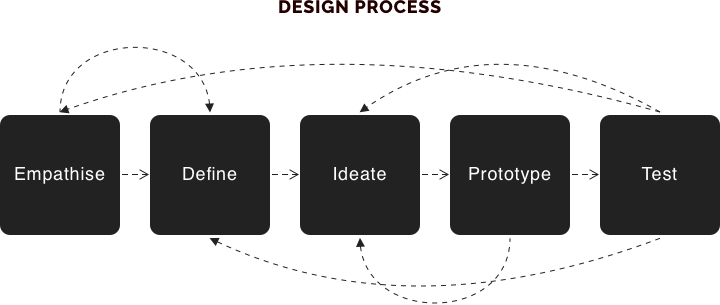
RESEARCH
DATA MINING
To craft an effective design, it's vital that our team collates data to paint a clear picture of our users, their needs, and predominant pain points.
Our online research proved to be a valuable tool, yielding crucial insights to shape and refine our thought process.
A standout study conducted by Deloitte Consulting in 2017 examined the passenger experience within the U.S. cruise industry in depth. Deloitte's findings underscored that cruise passengers are generally satisfied when basic expectations are met.
A pivotal takeaway from the study highlighted the importance of empowering passengers through hybrid channels. These channels synergises passenger data with face-to-face interactions, creating a seamless and delightful experience. As a result, enhancing digital capabilities emerged as a core recommendation, essential for captivating the latest and upcoming generations of cruise enthusiasts.
INTERVIEWS AND DISCOVERY
It is crucial to invest significant time both on-site and in dialogue with customers. Observing users as they interact with current digital offerings will pinpoint existing pain points. Moreover, direct feedback provides invaluable insights into potential enhancements.
Accompanying visually impaired passengers onboard is essential to grasp how they navigate the intricate layouts of corridors and communal areas. To further deepen our empathy and understanding, we might even consider experiencing the environment blindfolded. This immersive approach will amplify our perspective and inform our design decisions.
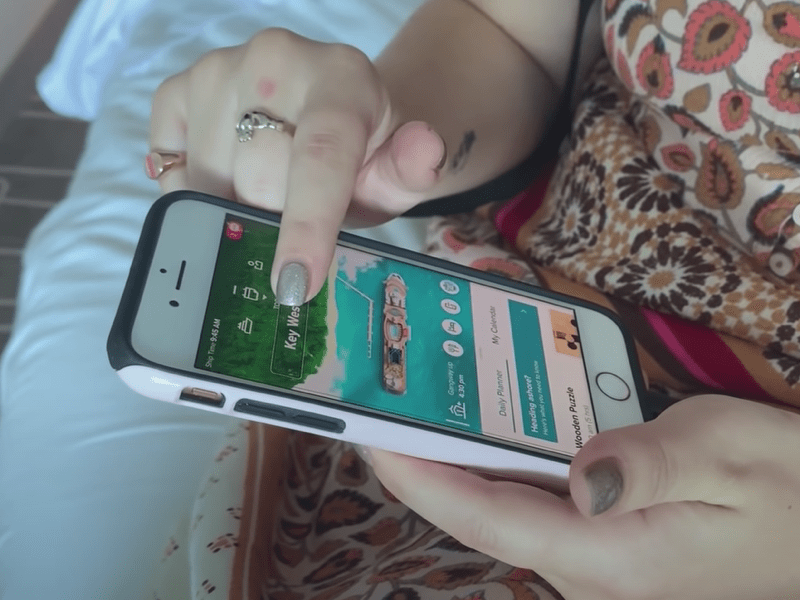
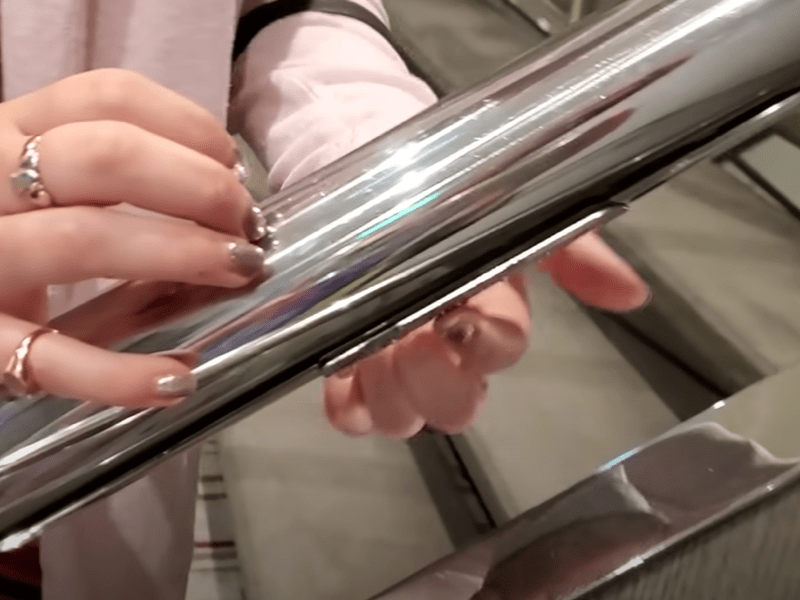
PERSONAS
For the purposes of this exercise, and given our time limitations, I will concentrate on a single Persona derived directly from our initial research.

The Millenial
Kelly J., 26, Youtuber
Kelly received a diagnosis of Retinitis Pigmentosa a few years back, and over time, her world has dimmed considerably.
Despite this, she remains dynamic and is perpetually connected. Kelly harnesses the power of technology and champions accessibility through her YouTube channel and public speeches.
Like many millennials, Kelly has ventured onto a state-of-the-art, "millennial-friendly" super-connected cruise ship. While she appreciated the overall experience and the strides made in accessibility, she believes there's room for further improvement.
Kelly is proficient in Braille and is always accompanied by her guide dog.
MAPPING
CUSTOMER JOURNEY
IDEATION
Using the opportunities highlighted by the journey map, I've decided to explore a hands-free navigation solution.
HANDS-FREE NAVIGATION
By default, visually impaired people rely on audition and touch.
Early through their impairment process, they ordinarily learn new essential skills such as Braille reading and white cane navigation.
Mobile devices are doing continuously better at supporting these accessibility needs with better touch and VoiceOver experiences.
But with COVID, having your hands going and touching all around isn't the safest, and one key point of improvement could be to help the visually impaired with a smart navigation system.
The idea is to create a network of Bluetooth beacons around the vessels. Cheap, reliable, and heavily customizable, they can offer many new ways of empowering blind passengers and even procure better and more interactive experiences for non-challenged customers.
PROTOTYPE
I will consider that the cruise line already has a service App available for the passenger -many do-.
Therefore I would only add a specific accessibility mode that could be activated on the user request OR once the profile has been completed. The backend would identify the passenger as visually impaired.
ACCESSIBILITY OVER AESTETICS
My focus for this mockup is on the accessibility, not the aestetics.
A fully accessible product may look dull or unpleasant to an healthy eye.
- -
Strong contrasts
- -
Monochrome layout
- -
Large well-defined buttons
- -
Large font
